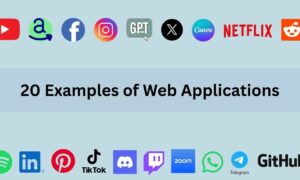Imagine a world where your refrigerator orders groceries when they run out. Where your smartwatch monitors your health and provides recommendations. Where a self-driving car takes you to your destination while you read a book or watch a movie. Sounds like science fiction? In fact, all of this is already a reality thanks to the Internet of Things.
The Internet of Things (IoT) is a global network of physical objects that can interact with each other and exchange data over the internet without human intervention. Any iot development company today is somehow working on solutions for the Internet of Things, pushing the boundaries of what’s possible.
How Does the Internet of Things Work?
The Internet of Things is based on four key elements:
- Sensors and devices that collect information about the environment (temperature, motion, sound, etc.)
- Connecting these devices to the internet via Wi-Fi, Bluetooth, cellular networks, or satellite communication
- Cloud platforms where the collected data is analyzed and processed
- Applications and interfaces through which users can access information and control devices
Let’s say you bought a smart light bulb. The sensor in the bulb detects the light level in the room and transmits this data via your home Wi-Fi router to the cloud. There, a special program analyzes the received information and decides whether to turn the light on or off. You can check the status of the bulb and control it through a mobile app, wherever you are.
Applications of the Internet of Things
The scope of IoT is vast. Here are just a few examples:
- Smart homes: intelligent lighting, climate control, security systems, household appliances. All of this can be controlled remotely from a smartphone.
- Wearable gadgets: fitness trackers and smartwatches that monitor physical activity, heart rate, sleep quality. They help maintain a healthy lifestyle.
- Industry: sensors in production monitor equipment condition, inventory levels, product quality. This allows preventing breakdowns and optimizing processes.
- Transportation: self-driving cars, smart traffic lights, and parking lots. The Internet of Things makes roads safer and reduces traffic congestion in cities.
- Healthcare: remote monitoring of patients’ conditions, smart medications that remind you to take them. IoT improves the quality and accessibility of medical services.
This list could go on indefinitely. It is predicted that by 2030, there will be over 50 billion connected devices worldwide. The Internet of Things is becoming an integral part of our lives, making it simpler, safer, and more efficient.
Risks and Challenges of the Internet of Things
However, the Internet of Things also has a flip side. The vast number of connected devices creates new threats to privacy and cybersecurity. Hackers can break into not only your computer but also your smart lock, surveillance camera, even your pacemaker. That’s why IoT developers pay special attention to data protection and system resilience against attacks.
Another issue is the compatibility of devices from different manufacturers. There are no unified standards and protocols for the Internet of Things yet. This complicates the interaction of gadgets with each other and the creation of a single ecosystem.
Despite these challenges, the Internet of Things continues to evolve at an incredible pace. With the advent of 5G networks, artificial intelligence, and blockchain, new opportunities for IoT are opening up. We are on the verge of a real technological revolution that will change every aspect of our lives. And the Internet of Things is its main driver.
Read More From Techbullion

































